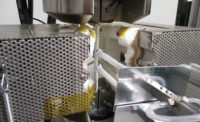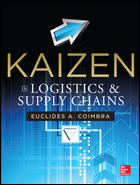Ceramic matrix composites (CMCs) and metal matrix composites (MMCs) are not new concepts, but they have yet to reach their potential. To date, a wide range of particles and whiskers have been used in these matrices, but the advantages have been questionable, applications limited, and manufacturing challenges difficult.
One of the most successful uses of CMCs to date is in brakes for aerospace, which have very high strength, durability, and heat resistance requirements. To include the silicon carbide (SiC) matrix into the network of short fibers, a gas infiltration method is used, but it takes multiple weeks to complete each part.
Continuous ceramic fibers have started to come to the fore in recent years, through the emergence of Nextel™ (alumina) from 3M, for example, and Nicalon™ (SiC) from NGS Advanced Fibers. These products have overcome many manufacturing challenges, as well as the post-production interfacial coating that is important for creep-rupture resistance and environmental protection. According to a recent report from IDTechEx, continuous ceramic fibers are anticipated to see a compound annual growth rate (CAGR) of more than 27% over the next 10 years (2017-2027).
CMCs on the Cusp
The main advantages of CMCs are increased strength and durability in high-temperature environments. The greatest interest surrounds the use of SiC/SiC in replacing nickel alloys in jet engines. Not only are the CMCs lighter (33%), but the higher temperature stability means that cooling air does not need to be channeled to the hottest areas, making the engine 15% more efficient.
GE Aviation has been a large driver in this field as part of its joint venture with Safran and Nippon Carbon to form NGS Advanced Fibers. The company recently announced a dedicated manufacturing site capable of producing SiC fibers for its future jet engine needs.
Oxide-oxide (Ox/Ox) is another prominent type of continuous fiber CMC, and it plays key roles in aerospace gas turbines, particularly for the exhaust nozzle. A CMC acoustic nozzle developed by Boeing as part of a collaborative project brought about a 20% weight reduction relative to titanium and operated above 1,500°F. Composites Horizons has invested significantly in this area and started delivering products to GE in 2014, initially for a Passport 20 engine. 3M is also working on reducing the cost of its Nextel products by increasing the denier, in much the same way that a heavy tow carbon fiber is much cheaper than its initially produced lighter tow counterpart.
CMC applications are not limited to aerospace engine applications. In fact, some of the earliest applications were in missiles (SiC/SiC) and industrial furnaces (Ox/Ox). Additional potential activities include hot gas ducts, land-based gas turbines and solid oxide fuel cells. Looking further ahead, CMCs could play a crucial role in satellites, commercial spaceflight and within the nuclear industry.
Uncertain Future for MMCs
MMCs have had a long and fluctuating history, with peaks of hype and long troughs. The most common criticism is that improved performance does not outweigh cost. Ceramic particles have been most commonly used with mixed results, and the greatest successes have all come from parts that have specific wear resistance or coefficient of thermal expansion (CTE) requirements. Exciting research developments and emerging companies surrounding the use of nanoparticles could allow particle MMCs fulfil their potential.
Continuous fibers in MMCs significantly lag behind their CMC counterparts. Nevertheless, some significant projects are still underway and, though still in the early stages, could become a key area. Opportunities for MMCs will arise from both following the growth of CMCs and as specific industry demands increase. However, the prejudices faced over many false starts will make this challenge all the harder.
Composite Metal Technology (CMT) has partnered with 3M to make use of Nextel fibers in forming continuous fiber reinforced aluminum matrix composites (CFR-AMC), which is done using an advanced liquid pressure forming process. CMT has shown the potential for this method by manufacturing an automotive suspension upright prototype with a CFR-AMC insert in collaboration with Jaguar Land Rover; the result was 30% lighter, 30% smaller and 20% stiffer than the original component.
Unlike the ceramic fiber tows discussed thus far, monofilaments are individual fibers consisting of a ceramic coating around a core material (usually carbon or tungsten). The immediate downsides of monofilaments include flexibility, increased density, and sometimes temperature limitations due to unwanted reactions. However, several property improvements are made possible for the metal part. The fibers can be spaced during manufacturing, which allows for relatively fast matrix infiltration and prevents the weaker spots arising from interfilament bonding. Monofilaments also have a small maintained interest in CMCs, the key advantage being their unmatched creep-rupture resistance.
If wide adoption for MMCs using monofilaments is to happen, it is expected to be within aerospace landing gear where the compressive strength of carbon fiber reinforced polymer (CFRP) cannot quite replace the metal incumbent. The payoff is immediately worth it; landing gear can make up 3-5% of an aircraft mass, and switching to a monofilament MMC can reduce this mass by 30-40%. While an example can be found in the Royal Netherlands Air Force F-16, no high commercial output is expected anytime soon.
Why Now?
Most of the early adopters of CMCs have long qualification periods and have not previously had high pressing demands. As commercial products emerge, however, the chicken-and-egg cycle of scaling without customers has been broken; this will allow the industry to finally expand. Future applications will not need the same cycles of vigorous testing and can be brought to market more quickly, which will help enable rapid growth.
Looking even further ahead, more underlying changes may still come in the manufacture of both fibers and parts. The manufacture of continuous SiC tow is done via a traditional polymeric precursor and spinneret process, but a promising alternative method can be found in the form of laser chemical vapor deposition (LCVD). While still at a very early stage and championed by Free Form Fibers, this method could quickly gain traction along with market expansion. LCVD provides a route not only into stoichiometric ceramic fibers, but also nascent materials such as pure boron and multifunctional or multiple-coated fibers.
For more information, visit www.idtechex.com/composites.



